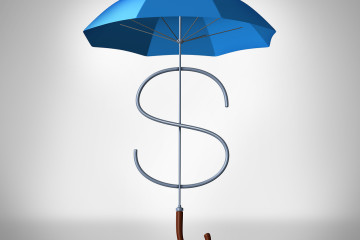Bloomberg Business: Is Government Making a Bad Bet on Student Loans?: Megan McArdle
©2015 Bloomberg View
NMK6GZ6KLVR6
(Bloomberg View) — Under the Barack Obama administration, the government has pretty much taken over the student loan business. Loans that might once have been made by banks (often with a federal guarantee) are now issued directly by the government. Proponents of this policy have hailed it as cutting out the middleman, arguing that the system even turns a profit. But all along, critics have quietly asked a question: What about risk? And now, as student loan volumes and delinquencies rise, those critics have gotten a little louder.
Under current conditions, the Congressional Budget Office estimates that the student loan program will remain profitable for the government, at least for the next 10 years. But that raises a couple of questions: What if those conditions change? And what happens outside the forecast window? The first question centers around a rather esoteric debate among budget wonks: Should the government estimate the cost of its guaranteed loan programs by simply adding up the expected costs (the interest that Uncle Sam will have to pay to borrow the money it lends, the money it will lose from defaults, and the overhead cost of loan origination and collections) and subtracting that from the expected revenues (the interest and principal the government will collect)? Or should it do what a private lender would, and account for the risk of changing market conditions? After all, the interest rates on treasury bills might rise sharply, leaving the government in the same position as savings and loan associations in the 1980s, holding 3 percent mortgages and paying 12 percent on savings accounts. Or delinquencies might rise. Either would put the student loan program into the red and — say the advocates of fair value accounting– should be properly included in the cost of the program.
Nonsense, say critics; the government is not a private lender, and this just inflates the accounting cost of a great program to make it look less attractive. Who’s right?
Well, sure, the government is not a private lender, but that doesn’t make the risk go away. It has issued a long-term, capped-rate, unsecured loan to someone with no credit history. Moreover, the government has added to its risks with a plethora of forbearance and deferment options, as well as income-based- repayment programs, that increase the costs of a loan. All that is risky, and there’s a reason private lenders demand to be compensated for that risk. The risk doesn’t go away just because the government makes the loan. Instead, it gets shifted to taxpayers. To say that we shouldn’t account for these risks anywhere is to say that the government should not care if it exposes taxpayers to future losses.
Moreover, there’s reason to worry that we’re not concerned enough about default rates. Federal Reserve data show that delinquency rates for student loans were 11.3 percent in the fourth quarter of 2014, up from 11.1 percent in the same period of 2013 though down from the rates we saw at the height of the financial crisis. This is significantly worse than delinquency rates on other types of loans, though when you look at delinquencies as a percentage of total loan balances, the numbers apparently look more similar. And as the Fed’s Liberty Street blog pointed out a few years back, the way student loans are accounted for actually makes the delinquencies look better than they are, because they are calculated as a percentage of total loans outstanding.
But many loans are in forbearance, deferment or some sort of income-based repayment program — about half, in fact. When you look just at loans on which payments are supposed to be made, the delinquency rates are about double the official level. If delinquency rates continue to increase as people leave school or deferments come to an end, then the government could end up losing a tidy sum.
But it’s in the years after 2025 that things really start to get ugly, because of what happens to income-based repayment programs. Those programs offer longer terms, usually 25 years, after which any remaining balance is supposed to be forgiven. That’s a huge cost — but one that does not show up in the CBO’s 10-year budget forecast window.
That cost will go even higher if Uncle Sam declares that this debt forgiveness is tax-free. Right now, that forgiveness, like other forms of debt forgiveness, counts as income to the borrower, meaning that they should owe the U.S. government somewhere from 25 to 40 percent of their loan balance in taxes. But no one really expects that this tax will be imposed, because it would be politically difficult to people who only accumulated those loan balances in the first place because they didn’t have much money.
Another possibility is that more students will catch on to what a great deal income-based repayment programs are, then, instead of scrimping for a few years to keep their loans manageable and pay them off as quickly as possible, will borrow the maximum, cap their payments at 10 to 15 percent of their discretionary income, and hand Uncle Sam a big bill 25 years out. That wouldn’t show up in the form of delinquencies, but outflows would rise while revenue fell.
The government already has almost $800 billion worth of student loans on its balance sheet, and that number is still rising briskly. We’re making a pretty big bet, and it’s not clear we’ve got the odds right.
To contact the author on this story: Megan McArdle at mmcardle3@bloomberg.net To contact the editor on this story: Brooke Sample at bsample1@bloomberg.net
For more columns from Bloomberg View, visit http://www.bloomberg.com/view







No Comment